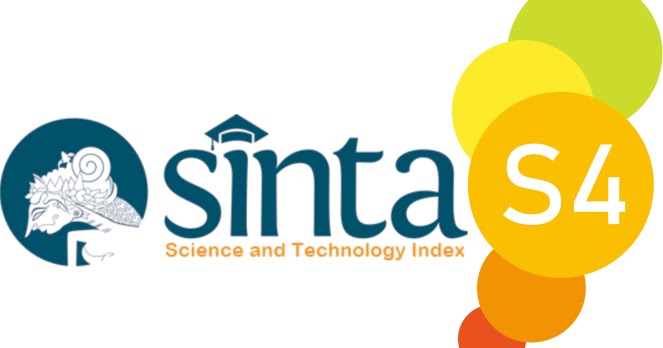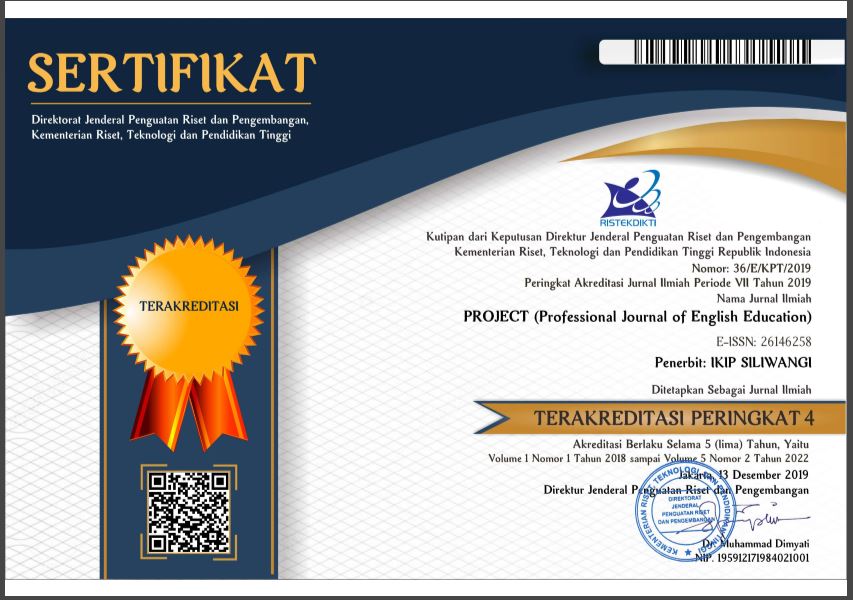Students’ Views on the Use of Google Translate in English Language Learning
Abstract
This study explores students’ views on the use of Google translate in English Language Learning, focusing on students’ perception on the use of Google translate and how them see it. The primary issue identified is that many students rely on Google Translate when encountering difficulties with vocabulary and long texts. Compared to other translation applications, Google Translate is widely favored among students because it offers a helpful features. The research employs a mixed-method approach, combining questionnaires and semi-structured interviews for data collection. The population of this research is third-year English students, Faculty of Teacher Tranining and Education at the University of Riau using random cluster sampling, 38 students were selected from 118 population.. The analyzing data using descriptive statistical and qualitative analysis by Miles and Huberman (1994). The findings reveal that students generally hold positive views on using Google Translate with an average total score 66.77 in which score classification is 57-95. The participants have positive views about Google Translate, which is the application is very helpful in learning English, for completing assignments and language development.
References
Alam, A. (2020). Google Translate Sebagai Alternatif Media Penerjemahan Teks Bahasa Asing Ke Dalam Bahasa Indonesia. Instruksional, 1(2), 159-163.
Aziez, F. (2019). Pengaruh penggunaan google translate terhadap kualitas terjemahan mahasiswa PSM PBSI UMP. Metafora: jurnal pembelajaran bahasa dan sastra, 5(2), 88-103.
Chan, N. N., & Ang, C. S. (2017). Investigating the use of mobile applications in everyday language learning. International Journal of Mobile Learning and Organisation, 11(4), 378-394.
Garcia, I., & Pena, M. I. (2011). Machine translation-assisted language learning: writing for beginners. Computer Assisted Language Learning, 24(5), 471-487.
Jolley, J. R., & Maimone, L. (2015). Free online machine translation: Use and perceptions by Spanish students and instructors. Learn languages, explore cultures, transform lives, 181-200.
Lestari, S. (2018). Peran teknologi dalam pendidikan di era globalisasi. EDURELIGIA: Jurnal Pendidikan Agama Islam, 2(2), 94-100.
Margiana, M., & Syafryadin, S. (2023). Students’ Perception of the Use Google Translate in English Learning. Jadila: Journal of Development and Innovation in Language and Literature Education, 3(2), 171-182.
Miles, M. B. (1994). Qualitative data analysis: An expanded sourcebook. Thousand Oaks.
Mulianingsih, F., Anwar, K., Shintasiwi, F. A., & Rahma, A. J. (2020). Artificial Intellegence dengan pembentukan nilai dan karakter di bidang pendidikan. IJTIMAIYA: Journal of Social Science Teaching, 4(2), 148-154.
Rahma, A. S. F., Qalbi, N., & Baso, F. A. (2021). Students’perception on English Teaching Using A Virtual System Online Learning. Journal of Computer Interaction in Education, 4(2), 1-15.
Sagita, M., Jamaliah, J., & Balqis, N. (2021). Students’perception About Google Translation Tool in Learning English. Getsempena English Education Journal, 8(1), 26-40.
Sugiyono. (2013). Metode Penelitian Pendidikan Pendekatan Kuantitatif, Kualitatif, Dan R & D. Bandung: Alfabeta.
Setiawan, A., & Axelina, M. (2023). The English Students’ Perception in Using Google Translate and U–Dictionary at Translation Class. International Social Sciences and Humanities, 2(1), 1-6.
Wei, L. K. (2021). The use of Google Translate in English language learning: how students view it. International Journal of Advanced Research in Education and Society, 3(1), 47-53.
Yuliani, Y., Ratna, R., & Haura, R. (2022). English Students’perceptions Towards The Use of Google Translate. Proceeding: Islamic University of Kalimantan.
Downloads
Published
Issue
Section
License

This work is licensed under a Creative Commons Attribution-ShareAlike 4.0 International License.




